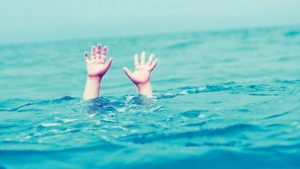 With coronavirus forcing thousands of families to cancel summer vacations, swimming pool sales are surging as Americans look to their backyards for some socially distant fun.
With coronavirus forcing thousands of families to cancel summer vacations, swimming pool sales are surging as Americans look to their backyards for some socially distant fun.
But with child drownings steadily trending upwards across the United States, safety experts are worried these aquatic staycations could turn tragic for far too many kids this year.
Our Child Drowning Lawyers have successfully represented victims of swimming pool accidents, dangerous swim toys, and other water-related tragedies, earning recognition from coast-to-coast for their aggressive pursuit of justice on behalf of injured children and their families.
Child Drowning Leading Cause of Unintentional Death for Kids Under 5
From 2015 through 2017, there were, on average, 379 reported pool-or-spa-related fatal drownings per year involving children younger than 15 years old. According to the U.S. Consumer Products Safety Commission (CPSC), annual fatal drowning rates increased gradually between 2015 and 2017, with a spike of 395 reported fatalities involving children younger than 15 years old in 2017.
The vast majority of these tragic accidents – 71% — occurred in residential settings, including a child’s own home, a family or friend’s house, or a neighbor’s residence.
Nationwide, child drownings remain the leading cause of unintentional death among children ages 1 to 4 years old. Kids younger than 5 years old accounted for 75% of child drownings between 2015 and 2017, more than half of which resulted from a gap in adult supervision.
There were also an estimated 6,700 pool-or-spa-related, hospital emergency department-treated, nonfatal child drowning injuries each year for 2017 through 2019. That’s the equivalent of about 18 kids every day, 365 days a year!
“Water safety vigilance remains as important as ever, especially in light of ongoing public health concerns and community restrictions related to COVID-19,” said CPSC Acting Chairman Robert Adler. “Our latest report confirms that most child drownings take place at home during the summer months. This year, with more families spending time at home, the delayed opening of many public pools, and a pause on many traditional group swimming lessons, I urge everyone to take critical safety steps to reverse the upward trend in fatal child drownings.”
Spending Summer Around the Pool? Here’s How to Keep Your Child Safe.
If you already have an in-ground or above-ground pool or are planning to have one soon, you’ll also need a four-sided fence that’s at least 4-feet high with a self-closing, self-latching gate to prevent kids from accessing the water on their own. You should also invest in an alarm for the pool, gate, and any doors leading to the backyard, as well as window guards for any windows facing the pool.
Because it can take less than a minute for a child to drown, passive supervision – being within earshot or even working poolside – won’t be enough to ensure your kid’s safety in the water.
Most experts recommend “touch supervision” for children 5 and under, as well as non-swimmers or those lacking basic water competency skills. That means an adult should be close enough to reach out and grab a child at all times. Parents should stay within eyeshot or arms reach while supervising kids under 10. To avoid any confusion whatsoever, one adult – who knows how to swim and is trained in CPR — should be designated the “water watcher.”
Keep kids away from pool drains, pipes, and other openings to avoid entrapment and ensure all pools and spas have drain covers that comply with federal safety standards. If you’re not sure, ask your pool service provider about safer drain covers.
The U.S. Centers for Disease Control (CDC) also advises against using any air-filled or foam toys, including water wings, noodles, or inner-tubes, rather than life jackets, when kids are in and around water. You should also ditch the floaties – inflatable baby neck rings, rafts, noodles, and the ever-popular puddle jumper. Instead, the CDC recommends getting in the water for interactive play with your baby and enrolling your child in survival swim lessons.
And because very young children can drown in just a couple of inches of water, never leave a baby or toddler alone in a wading pool, even for a moment, and empty the pool when not in use.
Jeffrey B. Killino is not only an experienced Child Injury Lawyer, he’s also a child advocate dedicated to preventing accidental drownings and other tragedies from ever occurring again. If your son or daughter was the victim of child drowning or a preventable swimming pool accident, please do not hesitate to contact us at 1-877-875- 2927.





